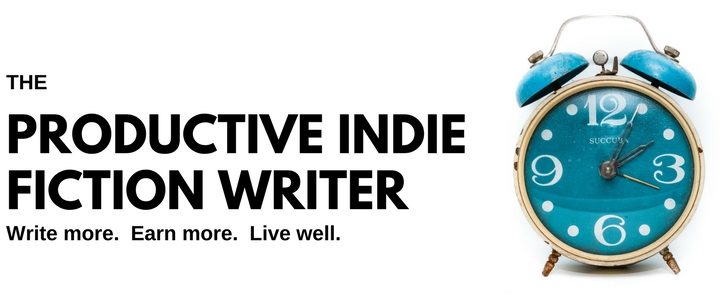
How paperless are your work processes? How close to completely paperless should you try to get?
I’ve been as close to 100% digital as one get get, these days, and have been for many years. The only thing stopping me from 100% is the occasional paper letter that lands among the junk mail in our mail box. Such letters have become a novelty in our house.
I got started early on the digital conversion because I was one of the first writers to publish ebooks, in 1999, via a publisher now long gone. This was eight years before Amazon came out with their first Kindle and revolutionized publishing, so most of my marketing was actually education, not persuasion. Most people didn’t know what ebooks were.
I was also one of the only people I knew to use a Palm Pilot to capture every stray thought, long before cellphones got smarter and were adopted by everyone.
So I’ve been heading toward 100% digital for a long time, and it’s ingrained. I’ve taught myself to brainstorm and plot with the keyboard, using Microsoft OneNote and Word. I use a Samsung Galaxy Note 9 cellphone, because I can “write” notes with the e-pen (which has gone missing, this weekend. That inconvenience prompted this post.).
I actually like handwriting. I like the act of scratching a pen across paper. I like formulating early thoughts about stories on paper, too. I can noodle around ideas, doodle, connect random thoughts. I even like writing out test paragraphs, outlines and brainstorming via paper is brilliant. I’ve avoided using paper for the longest time, though, because I *hate* the transcription process. It’s messy, expensive and inefficient and a huge time sink…or it used to be.
Why bother?
Pen and paper will be around for at least as long as you and I live, so if you’re really attached to them, you don’t have to change. But there’s reasons why you might want to:
Paper does not last forever.
Your journals, notes, and series storyboards that help you build your books will eventually age, crumble and disintegrate. Digital files, properly backed-up and stored, last forever.
Accidents happen.
You usually don’t duplicate paper records and notes. Flood, fire, and other accidents can destroy them. Or you could face the dilemma I did: Moving countries and having to leave everything behind. (Another reason that drove me toward paperless.)
Eventually, you have to create a digital version.
If they’re critical pieces of paper, you’ll find yourself creating a digital backup and copy. If they’re supporting documents (notes, etc), you will still have to transfer/transcribe the critical pieces to digital in order to use them to build your novel.
And if you compose with pen and paper, then you will face transcription sooner or later.
Why not make that transition sooner, rather than later?
Handwriting is slow.
It’s been a while since I outlined, plotted or even brainstormed on paper, but I still distinctly remember that there comes a point where my pen simply can’t move fast enough to keep up with my thoughts. At that point, I would switch to keyboard.
And then I would face the pain-in-the-ass process of bringing all the hand-written scribbles over to digital, too. Ugh.
The conversion process is messy, inefficient and gobbles up time
Especially if you’re transcribing the written word via keyboard into digital notes.
____
Why fuss with the hassles and time loss of handwritten notes? At least, that was my thinking, for many years.
Yet, I still clung to my Galaxy Note phones, and digital pens, because I couldn’t get away from the pen-and-paper thought processes. They prompt different ways of thinking.
The Case For Paper Notes
There are actually a couple of sound reasons for using pen and paper to journal, plan and even compose your stories.
The first reason is that the act of writing with a pen uses different muscles than typing, and as a result, your mind is jogged into different perspectives by the process. Your creativity can be jolted by the different medium.
For this reason, trying to journal, plan or write via keyboard when you’ve always used paper will also nudge you into different thought processes.
And the second reason is one of logistics. Sometimes, the only form of recording available is a pen and paper. Batteries fail, electronics die, networks disappear. (So do e-pens.) Sometimes it’s flat out politically incorrect to fire up your cellphone and swype madly. But there is always pen and paper for when you really have to get a thought down. The traditional writing-covered napkin has a time-honoured use.
It is for both of these reasons that I have continued to flirt with paper notes and planning. I just never fully engaged, because I hated the slowness, time sink and inefficient translation process.
The Missing Pen.
My cellphone’s digital pen went missing this weekend. Usually it is locked inside the phone, and the phone beeps at me if I try to move the phone too far away from the pen. The phone did beep, but despite several serious searches, I can’t find the pen anywhere near where the phone alerted me.
It has been only a minor irritation, because I have a dozen e-pens and could easily use one of those (even though basic e-pens don’t register with the phone, so my hand print smudges the “page”).
But I became aware of how much I use the pen, now I don’t have it.
The Online Conversation.
I am a member of the vast 20BooksTo50K® group on Facebook and fell into a conversation there about digital note taking versus hand notes, shortly after my pen went missing.
And I discovered there that transcription has been touched by technology–at last!
There are notebooks available that are endlessly re-usable–you just wipe the page with a damp cloth, and reuse the newly blank page. The tech part of this is that you use your phone to capture an image of the note-filled page before you wipe it. The app attached to the notebook can convert the notes to text, and upload it to one of seven different electronic storage locations, that you can preset. Or it can store images or PDFs of the notes…it’s up to you.
The original perpetual notebook was the Rocketbook notebook, but there are now imitators and knock-offs available, as the Rocketbook has been around for a couple of years.
The conversation that brought my awareness to the Rockebook notebook also reminded me of something I had forgotten: Microsoft already have an app for converting and uploading paper documents, whiteboards, photos and other input. It’s called the Office Lens, and like the Rocketbook app, it also uploads to any Office storage or program. If you upload to OneNote, OneNote can turn the image of your handwritten notes into text, plus any text in images is automatically searchable, so you can just leave the image of your notes intact if you prefer.
All the ways you can have the best of both worlds.
I did a bit of research and compiling and thought-sorting (on paper!) yesterday, to figure out all the ways possible to capture notes using pen-and-paper, or very close facsimiles of pen-and-paper, and converting them to usable digital files.
Microsoft Surface Pro or the Remarkable Tablet
Until yesterday, I wanted a Surface Pro so badly, I could taste it. Only, anything more than the most basic configuration runs into thousands of dollars after exchange rates take their hit. So it has been a pipe-dream for more than a year.
The Surface Pro and the newer Remarkable tablet both provide a near-equivalent writing-on-paper experience, because their pens are registered, and your palm print doesn’t, which lets you rest your hand on the screen as you would with paper.
These devices eliminate any need to transcribe, because you’re inputting directly into the device. Plus, with OneNote or other OCR converting apps, you can turn your notes into editable text.
They’re both expensive, though.
Cellphones with registered pens.
I’m only aware of the Samsung Galaxy Note in this category, although there may well be others. These devices work as the Surface Pro and Remarkable do–they have a pen that is registered, so they ignore your palm print.
The drawback is the tiny screen. You can take notes well enough, but when the notes synchronize with a larger screen device, they only take up the small top corner of the screen.
They’re not useful for long distance writing, or for notes where you want to brainstorm with arrows and doodles and see the big picture at once.
They’re great for capturing quick ideas, though. I will continue to use my cellphone for this purpose — once I find the pen!
Cellphones and Tablets with standard e-pens.
This is another options I’ve played around with. You can get cheap e-pens by the boxful, and they work just fine. Only, you can’t touch the screen with your hand while you’re writing, or your palm print smears the screen and confuses the software.
Still, for quick captures, and highlighting already existing notes and text, the pens work well.
You could also train yourself to avoid touching the screen while you’re using the pen, especially on the smaller devices. As the pens are priced at less than a dollar each (if you shop around), this is a great way to ease into digital note-taking.
Rocketbook notebooks and other re-usable journals
Rocketbook notebooks and their cheaper knock-offs are almost flawless pen-and-paper experiences. Only, the paper isn’t exactly paper, and the pen can smear if you touch the ink before it dries. The page doesn’t last forever–eventually the ghosts of previous notes will dilute the pen-and-paper experience.
Synchronizing with your digital storage is not instantaneous — you have to capture the images with your phone.
However, even the shoot-and-upload process is streets ahead of transcribing with a keyboard.
My one concern is that the notebooks are basically plastic. Because the world really needs more plastic. However, the components of digital devices are not much more environmentally friendly, and many of them are plastic, too. Digital devices do last a bit longer, though.
I did buy one of these notebooks yesterday, because I want to test it and see how it works. If the pages do eventually become unusable, I’m not sure I’ll buy a replacement, for this reason.
Traditional pen-and-paper + uploading apps
I know there are other text-capturing apps out there, but I am familiar with the Office Lens app and it works just fine, especially in conjunction with OneNote’s image-to-text functions.
Traditional notebooks are made of paper. Dead trees. The paper-making process impacts the environment, but paper is completely recyclable. It breaks down and decomposes just fine, so there’s that.
If I can’t use a direct digital form of input, I’ll likely use this one.
My one concern is that the latest version of OneNote has had most of the useful features stripped out of it, to the point where I (and a great many others) refuse to use it. I won’t even link to it, because I cannot recommend it at all. I struggled with the “upgrade” for a month, before returning with great relief to OneNote 2016, which includes the image-to-text features, and handwriting recognition, too.
Microsoft say they will support OneNote 2016 only until 2020. If the newer versions haven’t adopted the same features as the 2016 version by then, I will be forced to using the Rocketbook notebook, instead.
____________
In conclusion, there are lots of possibilities, across a range of budgets, so it is possible to have your cake and eat it, too. You can continue to use pen and paper, and still have immortal digital notes.

Man you are so full of all kinds of information. As always, I found this very interesting and enlightening.
Thank you, Dina.